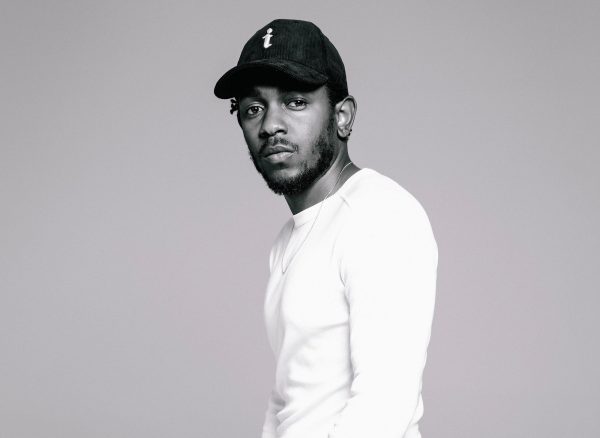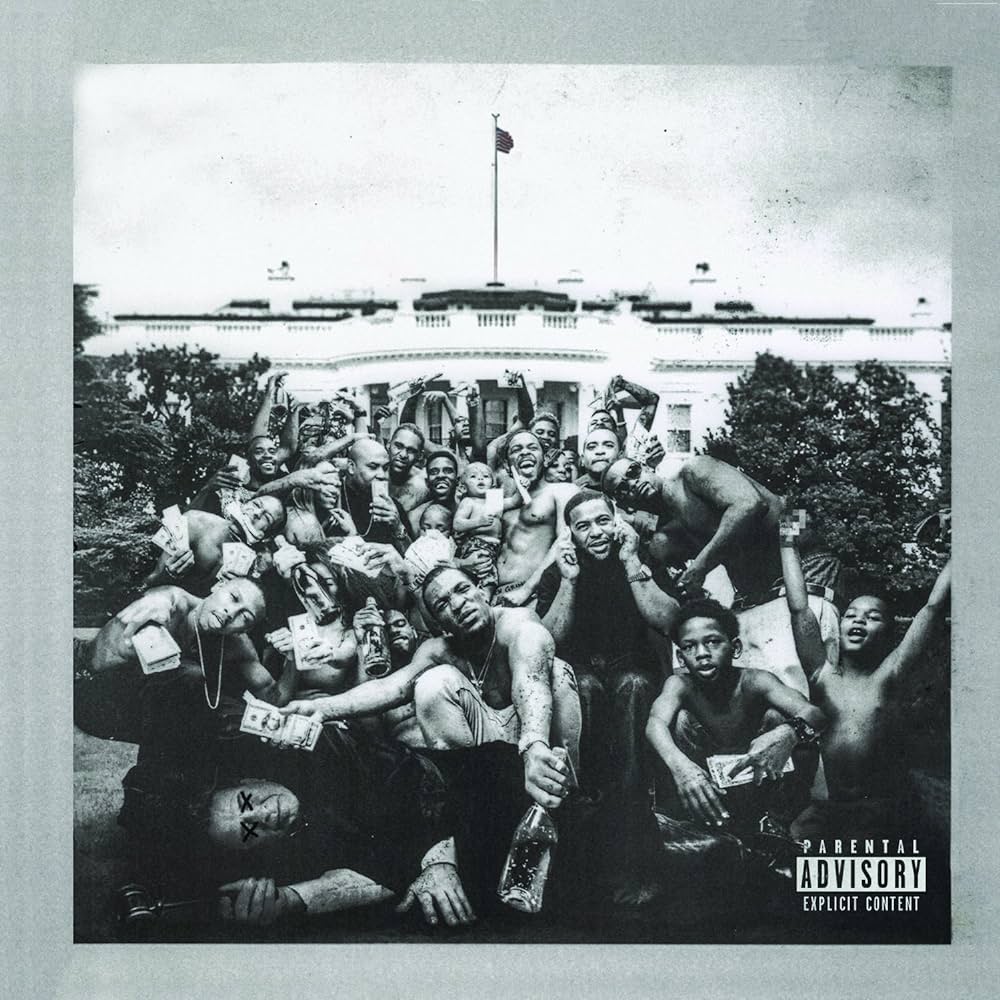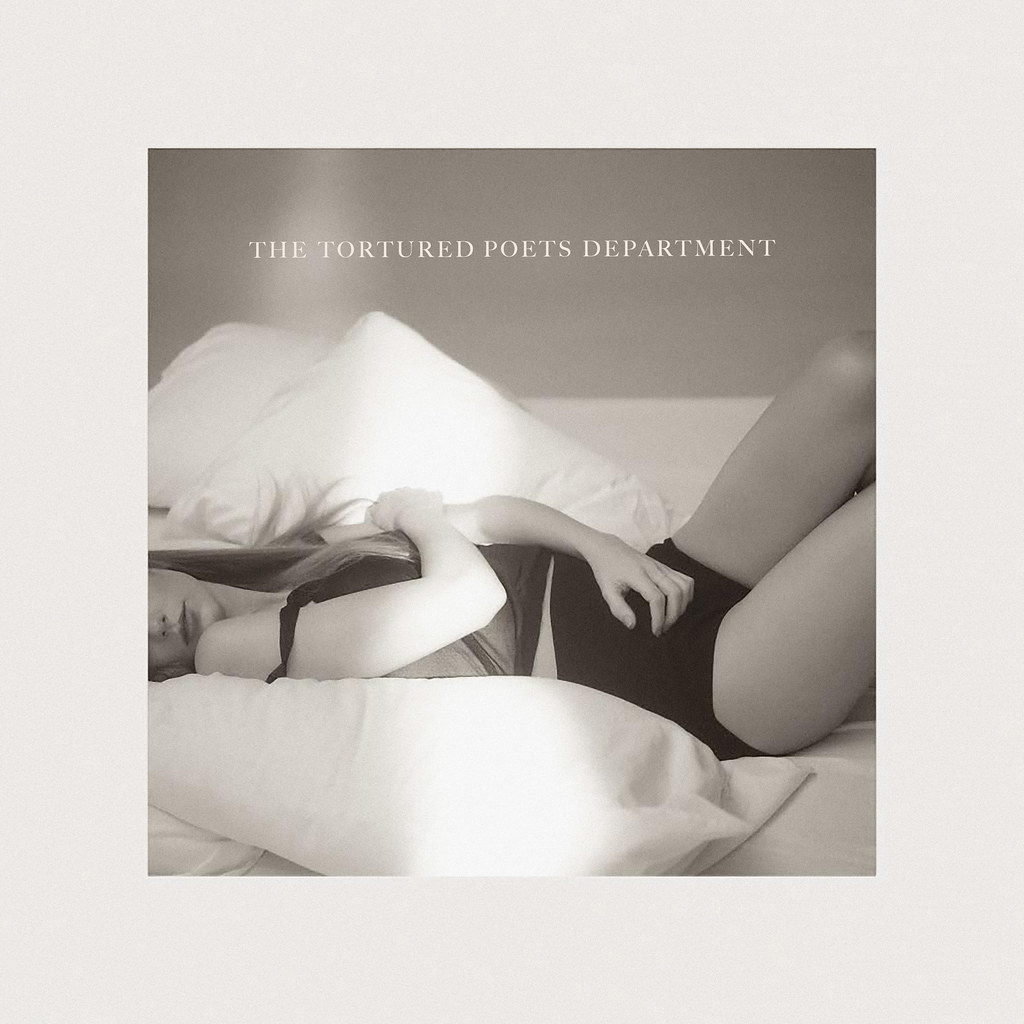
In 2015, the world had a focus on social justice. It was Barack Obama’s final term as president, Angie Thomas’ novel The Hate U Give was made into a major motion picture, and the Black Lives Matter movement was beginning to sweep the United States. One of the major influences of the culture of the era was Kendrick Lamar, who would release his third studio album, To Pimp A Butterfly, in March. The album was instantly met with acclaim from critics and casuals alike, and was touted as one of, if not the greatest rap album of all time. As someone who is desperately trying to get into lyrical, powerful rap, it was a no-brainer to listen, and I can’t say I regret it.
TPAB, as it’s commonly abbreviated, is Kendrick’s memoir about the struggles of an African American man in the rap industry. He’s commonly overcome with greed, or taken advantage of, or what have you. Kendrick communicates this not only with his famously complex and eloquent bars, but the production lends to the story well. Thundercat had a heavy influence, using his powerful messages and funky feel to truly drive the point of the album home. The features are well done and fitting, most notably vocals from Bilal and Anna Wise. George Clinton is also an extremely welcome addition to the opener, Wesley’s Theory. His work has influenced not only Kendrick, but the album as a whole.
TPAB goes so much deeper than it’s common singles. Alright was Kendrick’s most listened to song on Spotify prior to his altercations with Drake, and for good reason. It’s an all-around good time, and it’s message is universal: Even though life may not be perfect, we’re going to be alright. King Kunta is also quite popular, with a very funky atmosphere and another good vibe.
My personal favorite song on the album is These Walls. It describes Kendrick’s affair with a woman whose boyfriend killed a friend of Kendrick’s. It features Bilal and Anna Wise, and the production is fun and engaging. My full review will be added below, as with my reviews of the other songs mentioned above.
Overall, after rating all of the songs on the album, I gave it a 4 out of 5 paws. But take my opinion with a grain of salt, as my opinion is purely subjective. This album is vastly different from my typical taste in music, although as someone who tends to listen to psychedelic rock, I can appreciate the attention to production. I also can’t deny the influence and power of the album. I find it fascinating how relevant it is today, and it really paints a picture. It’s a must-listen for your hardcore rap fan, and I can’t argue with its GOAT status. So pounce on it, Tigers.
1 – Wesley’s Theory ft. George Clinton, Thundercat
The song describes the US’s common exploitation of the black community, with two different perspectives: Kendrick, who is infatuated with his new found wealth, and Uncle Sam, who makes an attempt to persuade Kendrick into spending more. George Clinton’s feature is very welcome, as his vocals offer a nice contrast to Kendrick’s rap style, and Thundercat’s influence gives the song a funky-yet-ominous feel.
4.2/5, already on my playlist.
3 – King Kunta
This song uses references to Kunta Kinte, a slave stereotype from a novel I couldn’t bare to read. This is one of Kendrick’s many allusions between slave culture and the modern rap industry and it works. He uses his diverse knowledge of black media and ties it into his personal experiences in the industry. Thundercat co-wrote the song, and it’s pretty clear from the melody and funk. The production is nice, with a walking bass drum, well aligned with the lyrics “bitch where were you when I was walkin?” This is also the first instance of Kendrick’s now iconic “I remember you was conflicted” poem, words that recur and expand as the album progresses.
4.0/5, will likely listen more.
5 – These Walls ft. Bilal, Anna Wise, Thundercat
I lied, THIS is my favorite production so far. The title of the song and the common lyric “if these walls could talk” is a triple entendre between the walls of a woman’s vagina, the walls of a prison cell, and the walls of Kendrick’s mind. The song portrays Kendrick having sex with a woman whose baby daddy killed Kendrick’s friend. He sees it as “revenge” in a way, but also doesn’t want to use his fame to seduce and exploit the woman. This song more heavily features Anna Wise, with some great vocals throughout. Bilal’s parts are interspersed nicely as well. Thundercat’s influence continues to reign in the vocals and production.
4.6/5, a strong candidate for my favorite off the album.
7 – Alright
A far better atmosphere than most of its predecessors, this track shows a sliver of hope in Kendrick’s journey to find purpose. Although not credited, Pharrell Williams is featured as a producer and vocalist, and he does an impressive job. Thundercat also has an admittedly much smaller role, also uncredited. We see more recurrence of the “What you want, you, a house? You, a car?” lines, this time involving Lucy, presumably a recurring villainous figure on the album. The character is also now featured in the poem, which we hear more of at the end.
4.5/5, just a damn good time.






